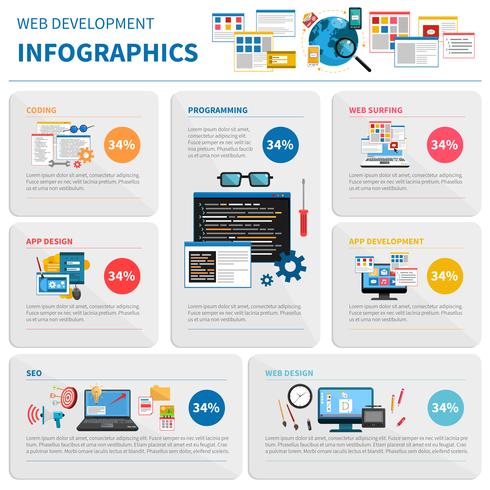The Evolution Of Website Design: From Past To Existing
The Evolution Of Website Design: From Past To Existing
Blog Article
Authored By-Collier Gibbons
In the past, internet sites were simple and focused on details. Navigating was straight, and style was for desktops. Currently, individual experience is crucial. Information guides styles for simple navigating. Receptive formats match various devices. Today, dark mode reduces pressure, and minimal food selections boost navigation. Interactive features involve customers, and vibrant visuals stick out. AI assimilation boosts interaction. See just how design has actually developed to boost your on the internet trip.
Very Early Days of Website Design
In the early days of web design, simplicity reigned supreme. Internet sites were standard, with limited colors, font styles, and designs. The emphasis got on giving information instead of fancy visuals. Customers accessed the web through slow dial-up connections, so speed and performance were crucial.
Navigating menus were straightforward, generally situated on top or side of the page. Web sites were designed for desktop, as mobile surfing had not been yet prevalent. Web content was king, and designers focused on simple readability over complex layout components.
HTML was the primary coding language used, and designers had to function within its restrictions. Animations and interactive attributes were very little contrasted to today's criteria. Web sites were static, with little dynamic web content or individualized individual experiences.
Surge of User-Focused Layout
With the development of website design, a shift in the direction of user-focused layout concepts has actually become progressively prominent. Today, producing sites that prioritize customer experience is essential for engaging visitors and achieving organization objectives. User-focused style involves comprehending the requirements, preferences, and habits of your target market to tailor the web site's design, content, and includes as necessary.
Designers now conduct thorough research, such as individual surveys and usability testing, to collect insights and feedback straight from customers. This data-driven technique aids in developing instinctive navigation, clear calls-to-action, and aesthetically appealing user interfaces that resonate with site visitors. By putting web content marketing at the facility of the style process, internet sites can provide an extra personalized and enjoyable experience.
Responsive design has actually additionally emerged as a vital aspect of user-focused style, ensuring that web sites are maximized for numerous devices and screen sizes. This versatility improves accessibility and functionality, satisfying the varied means individuals communicate with websites today. Fundamentally, the rise of user-focused layout symbolizes a change in the direction of creating digital experiences that prioritize the demands and expectations of the end individual.
Modern Trends in Website Design
Explore the most recent fads shaping website design today. One popular trend is dark mode design, supplying a streamlined and contemporary look while reducing eye pressure in low-light settings. Another essential fad is minimal navigating, simplifying menus and boosting user experience by focusing on essential elements. Including micro-interactions, such as computer animated buttons or scrolling impacts, can produce a much more appealing and interactive site. Receptive layout continues to be important, ensuring seamless individual experiences across various devices. In addition, utilizing vibrant typography and unbalanced formats can include visual passion and draw attention to certain web content.
Integrating doj ada website accessibility , like chatbots for client assistance or customized recommendations, enhances user involvement and enhances processes. Availability has additionally become a considerable fad, with designers prioritizing comprehensive layout techniques to deal with diverse individual demands. Accepting sustainability by enhancing site performance for rate and effectiveness is another emerging fad in web design. Working together with user feedback and data analytics to repeat and boost design continually is crucial for remaining appropriate in the ever-evolving digital landscape. By embracing these modern-day patterns, you can create a visually appealing, straightforward web site that reverberates with your audience.
Final thought
As you reflect on the development of site layout from the very early days to now, you can see how user-focused design has ended up being the driving force behind modern-day patterns.
Welcome https://studybreaks.com/thoughts/7-essential-on-page-seo-tips-every-business-should-follow/ of modification and adaptation in website design, always maintaining the user experience at the forefront.
Keep present with the most recent fads and modern technologies, and never stop developing your method to produce aesthetically magnificent and user-friendly web sites.
Progress, adjust, and develop - the future of web design remains in your hands.
